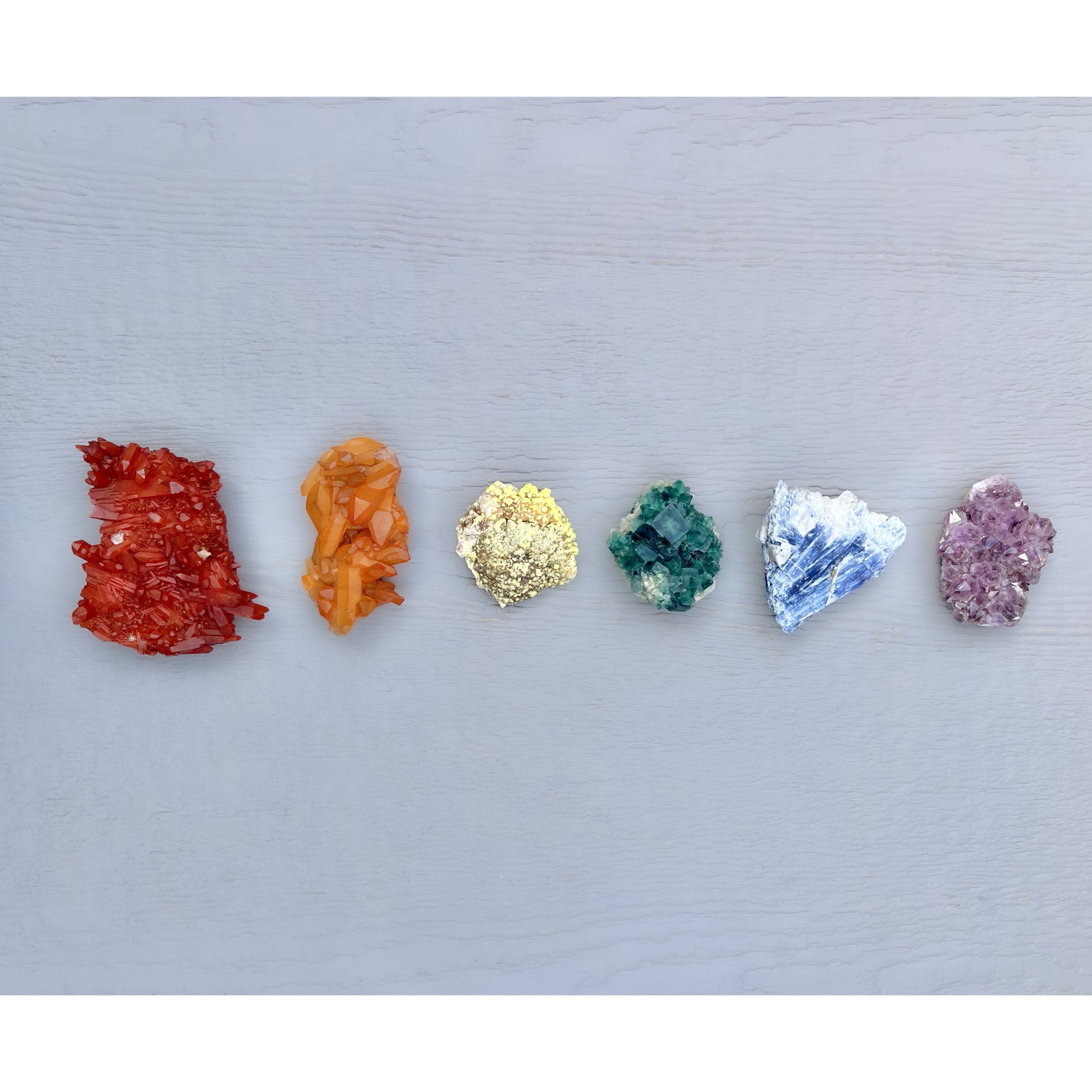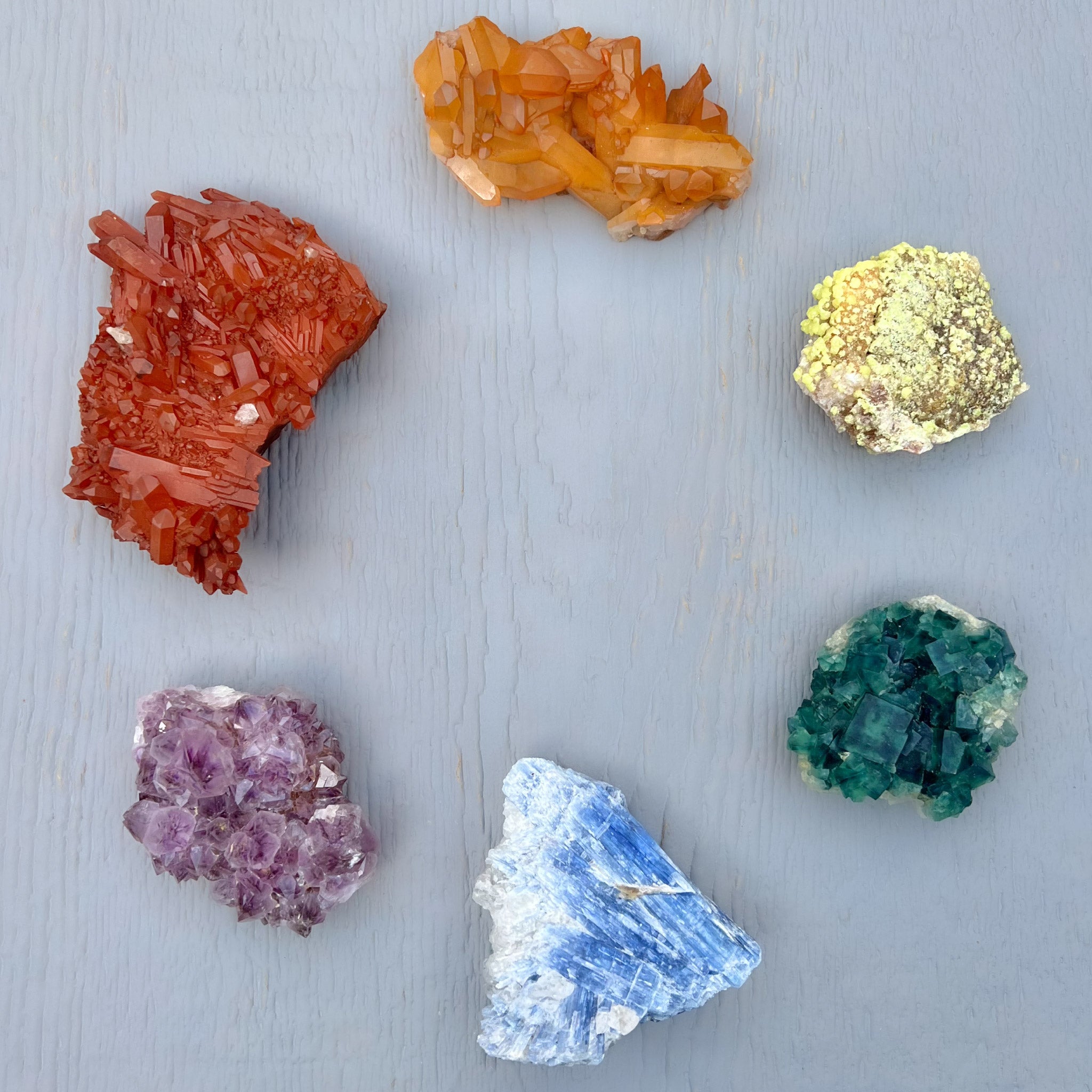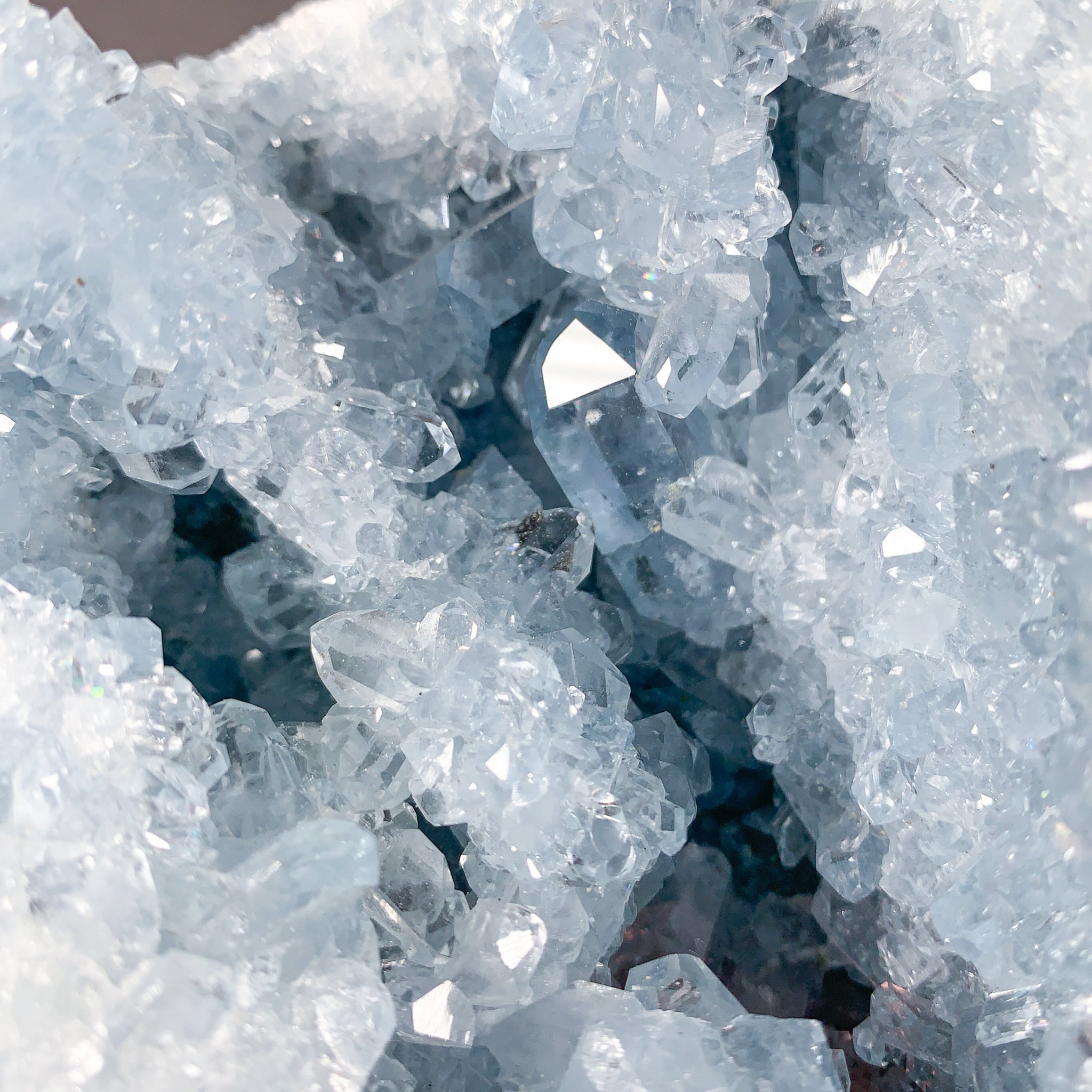Why Do Minerals Form In Different Colors?
The color of a mineral is often the first thing we are drawn to when viewing a specimen. Eye-catching and vibrant colors can easily be observed, and may serve as a quick mineral identification tool. But what causes one mineral to be green and another purple? We'll explore the chemistry and the alterations contributing to a minerals color.
Why Are Some Minerals Clear, Colorless or White?
When light, specifically white light, hits a mineral specimen it can be transmitted through the specimen, reflected, refracted, scattered or absorbed. When we refer to a minerals Luster, what we are observing is the process of light scattering and reflecting off the surface of the mineral.
If the light does not get absorbed at all, the mineral appears colorless in reflected and transmitted light, such as clear Quartz.

When we perceive a mineral with color, we are viewing certain wavelengths being absorbed by the mineral. Those wavelengths that do not get absorbed combine and reach our eye as a specific color.
What Gives a Mineral Its Color?
When we perceive white light shining on colored minerals, certain wavelengths are absorbed, (and therefore removed from the spectrum), causing the excitation and sometimes movement of electrons between orbitals. For example, if red, orange, yellow, blue and violet wavelengths are being absorbed, we would perceive the mineral as being green.
Transition Metals That Effect Crystal Color
Certain transition elements including Iron, Manganese, Chromium, Copper, Nickel, and Cobalt that are present in minerals have electrons which can be excited by energy from light and often produce very vibrant crystal colors.
For example, Emerald is a gemstone variety of the mineral Beryl. As mentioned above, when we view an Emerald crystal, the red, orange, yellow, blue and violet wavelengths are being absorbed by the mineral. What is transmitted to our eye is the classic green color associated with Emeralds.
Interestingly, even if the minerals known chemistry does not seem to contain an absorbing element, tiny concentrations of that element can alter the color of the mineral.
The chemical formula for Emerald (beryl) is Be₃Al₂Si₆O₁₈. You'll notice Chromium (Cr) is not listed in its formula. However, a tiny concentration of a Chromium (Cr₃), ion, replaces a tiny amount of Aluminum (Al) in the formula, allowing for the absorption of the other colors, causing the transmitted light to be green.
As you can see, even a minuscule replacement or addition of an element or ion can effect the color of a mineral!
Why Are Some Minerals Always the Same Color?
Most minerals classified as "metallic", those with a metallic luster, vary little in color, while most non-metallic minerals can vary widely in color.
In most non-metallic minerals, color can be a helpful identification tool if the mineral is a constant color. For example, Malachite is always green. But for many minerals, color is one of the most dynamic changeable properties, and therefore can often be unreliable for identification purposes alone.

How Can the Same Mineral Form Into Different Colors?
In many minerals, color can be a dynamic and unreliable diagnostic property. For example, Fluorite can form in a wide variety of colors from green, blue, purple, and gold.

Internal Geometry and Crystal Structure
Atomic structural defects inside a mineral cause changes in crystal coloration. On an atomic level, an excess electron that is unattached to any single atom, or a "hole" from an absence of an electron can have the same effect.
In Fluorite, formula CaF₂, a purple color is scene when there is a defect in the structure. An F- ion is missing from its usual site in the Fluorite structure. This can be caused by a variety of factors, such as the Fluorite forming in an environment with excess Calcium, or perhaps from radiation within the Earth displacing the F- from its usual position.
This causes it to occupy an excited state, similar to the transition metals we described earlier. This movement can cause not just variations in perceived color but also optical fluorescence!
Other Causes of Crystal Color
What is a Mineral Coating?
If you have ever seen a crystal specimen that appears to have a color that does not seem to match the interior, it may be coated with another element or mineral. For example, some Quartz (like the example below) may appear very red. This variety of Quartz has a natural iron-rich coating which creates a vibrant color on the exterior of the Quartz. However, this is just an exterior coating, not a color inherent to the Quartz crystal.

What are Crystal "Impurities"?
Another coloring agent is the addition of "impurities" which can cause an otherwise colorless or neutral-toned mineral to be colored. For example, clear Quartz can have a greenish hue due to the presence of finely dispersed Chlorite inclusions that were deposited inside the crystal as it was cooling. Calcite may become red due to the presence of small concentrations of Hematite (iron oxide) inside.
What is a Crystal Inclusion?
Crystal inclusions refers to the presence of another mineral inside the host mineral. Inclusions of other minerals can cause a crystal to appear a different color than it would be naturally or solo. For example, Rutilated Quartz is a clear Quartz with bright golden yellow inclusions of the mineral Rutile.

Dipped and Dyed Stones and Minerals
You may have seen "Aqua-Aura" Quartz on the market, or minerals with trippy names that look electric pink, purple and blue. Some with an iridescent rainbow appearance similar to oil slicks on water. While some of these colors can occur naturally, make sure you ask the seller if the colors are natural! A popular trend that has emerged in the mineral market is the dipping and dying of crystals. In some instances, Titanium "baths" are created, where clear or white Quartz crystals are dipped into the solution, and emerge with an iridescent coating. Many Agate varieties are also dyed by soaking the stone in a solution, similar to tie-dying a white t-shirt. This creates a beautiful array of colors, while pretty to look at, is not natural to the stone.

What Does it Mean When a Crystal is Heat-Treated?
You may have seen Citrine geodes on the market that look electric yellow or bright orange. While these are fun things to collect, specimens can sometimes be "cooked", or heated to varying temperatures which causes the mineral colors to enhance their depth of color, or sometimes alter the color completely.
For example, the Citrine geodes are actually heat treated Amethyst. Even many specimens of Smoky Quartz or "Morion" Quartz on the market now have been heat treated to enhance the depth and darkness of color.
Don't be afraid to ask the seller if the stones have been enhanced in any way. A reputable seller will give you an honest answer.
Rock Weathering, Tarnishing, Surface Staining and Oxidation
If you're out in the field and find a cool mineral you are trying to identify based upon color alone, make sure you have a clean and freshly broken surface to work with. Simply washing off a specimen will not be enough, as often times impurities can penetrate into cracks and fractures in the stone. A newly broken or cleaved edge will allow you to see inside the mineral to determine its true observable color.
Speaking from experience, my freshman year of college I found a cool rock near a stream bed that had a beautiful reddish hue. I brought it to my professor and asked him to assist me with identification. He said, "You're officially studying Geology now, what do you think it is?"
I guessed some sort of Red Jasper, and he instructed me to break off a piece of the rock and then re-evaluate. Upon breaking the rock, I noticed the inside was a milky white color, not the bright red on the exterior. He explained that through weathering, and iron-staining (tarnishing), the Quartz blob I found that was actually white now had a red exterior.
Oxidation
It is important to have a freshly broken surface for mineral color identification, as exposure to the elements, including water, ice and air can alter a minerals apparent color. For example, tarnishing or rusting (oxidation) of a Pyrite specimen may cause the original, shiny brass-coloration to turn dull and brown.

Conclusion
As you can see, there are a wide variety of factors that can contribute to the perceived color of a crystal. With the understanding you've gained here, hopefully you'll be able to more easily identify certain minerals or perhaps spend a little more time examining specimens when buying.




